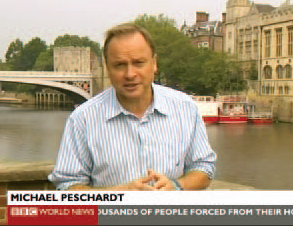Yasukuni Nagano's family no longer has a table to eat their evening meal around, nor a working kitchen to prepare it in. They no longer have a television to gather round in the evening, nor even chairs to sit on.
Like thousands of families all along the Tohoku coastline, their house is now startlingly bare: the tsunami swept away all of their furniture, appliances and personal possessions. The only thing that remains in their otherwise empty living room, rather incongruously, is a grand piano.
Although the tsunami rendered it unplayable--Nagano recalls that not a single key worked--it has now been restored to perfect playing order by a generous crack team of piano tuners and technicians from Kawasaki, Kanagawa Prefecture, who traveled the 600 kilometers to the Nagano family home in Kamaishi, Iwate Prefecture, to fix the piano for free.
Nagano bought the piano just six months prior to the March 11 tsunami for his 12-year-old daughter, Yuki, who has played the instrument since she was 5.
"We wanted to buy it over a year ago, but we couldn't find the one we wanted. Finally, after searching for another six months, we came across this one. It was perfect; it was as if it had been waiting just for us."
Nagano paid around 3 million yen ($37,100) for the Yamaha grand piano, imagining it would become a family heirloom for his grandchildren and great-grandchildren to enjoy.
Yet watching the tsunami sweeping through his town on March 11 from the safety of a hill, he feared the worst. When the family went back to their house after the water had drained away, Nagano entered his house with trepidation.
"It had fallen onto its side, but by some miracle, the window next to it didn't smash, so it wasn't swept away," explains Nagano. "But when we tried to press the keys, not a single one worked."
The family first had to clear the thick mud off the floor, but Nagano was itching to try and fix the piano. He asked a local piano dealer to come to the house to advise what could be done, but they took one look and shook their heads. They told him it was beyond repair: the salt had rusted the metal parts, the keyboard was uneven, and the legs had cracked after being swollen by the seawater.
"But I knew there had to be a way to fix it," says Nagano. "I was hoping for another miracle. So I took the piano apart and then washed it, piece by piece, in the yard. The neighbors must have thought I was nuts!"
While he managed to get the piano to play notes again, he knew he needed a professional's advice. It took three weeks for him to get his mobile phone working again so he could access the Internet and look for piano technicians farther afield. Finally, he hit upon Klavier Haus, a small company based near Yokohama city in Kanagawa Prefecture.
When president Kazutaka Matsuki received an e-mail from Nagano, he knew that he and his staff had to go and see the piano for themselves.
"Tsunamis don't exactly come that often," he says. "Not only were we eager to help, we thought that it would be a wonderful learning opportunity, to see what we could do with a piano damaged by seawater."
Klavier Haus offered to travel up to Kamaishi to fix the piano for free. At first, Nagano couldn't quite believe it.
"All that way--and they weren't asking for any money? I thought it was incredible. I'm so grateful to them," he says.
So Matsuki, along with tuners Sumiko Kuriya and Miyuki Komekawa, bought tickets for an overnight bus ride to Iwate during Golden Week, a string of national holidays when their shop would be closed.
Despite their fears that the piano would be a wreck, they were surprised to find that Nagano had already done a stellar job in cleaning and protecting the piano.
"It was amazing," says Kuriya. "We sensed his energy and enthusiasm when we had spoken to him on the phone, but after seeing the piano we knew that he really wanted to fix it for his daughter."
Yet there was still much to be done. The three worked from 9 a.m. for 12 hours straight, hammering nails through the legs to close the cracks, carefully sliding pieces of paper under the keys to make them even again, and meticulously cleaning the wires and other metal bits of rust. Since this is the first time they had ever treated a piano damaged by seawater, they have stayed in contact with Nagano, who said he will drive the piano to Klavier Haus if any parts need replacing in the future.
"It doesn't sound exactly as it did before," says Nagano. "But my daughter can finally play it again, and it makes me so happy to hear it."
















